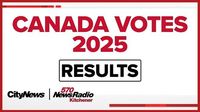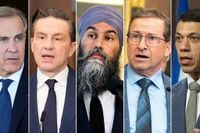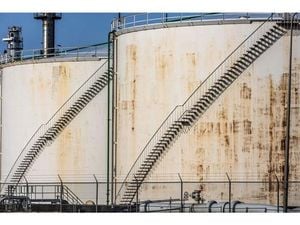As the dust settles on the 2025 Federal Election in Canada, early results indicate a competitive landscape, particularly in Ontario, where the Liberals appear to be marginally ahead. Just after midnight on April 29, 2025, the Liberals led in 65 of Ontario’s 122 ridings, while the Conservatives were ahead in 57. The New Democratic Party (NDP) and the Greens, however, failed to secure any victories across the province, marking a significant shift in voter sentiment.
If these preliminary results hold, it would signify a decline for the Liberals compared to their 2021 performance, where they won 78 ridings, and a corresponding gain for the Conservatives, who secured 37 ridings back then. The NDP, which previously held five seats, faces a complete wipeout in Ontario, a province that has historically been a stronghold for the party.
The 2025 election saw a total of 343 ridings contested nationwide, with Ontario representing a crucial 122, or 36 percent, of those. In Toronto, the Liberals maintained their traditional support, though the suburbs saw the Conservatives making minor inroads. This shift reflects changing dynamics in areas that had previously leaned Liberal in past elections.
In Ottawa, the Liberals were poised for a series of traditional wins, with Liberal Leader Mark Carney projected to win his riding of Nepean. Meanwhile, Conservative Leader Pierre Poilievre was trailing slightly in his Carlton riding, where a protest aimed at signing up candidates had taken place. The results suggest that a collapse in NDP support has reshaped Ontario’s electoral landscape, transforming it from a province that delivered a comfortable win for the Liberals in 2021 to a more competitive battleground.
As of 12:15 a.m. on April 29, the Conservatives had secured 45 percent of the popular vote in Ontario, compared to 53 percent for the Liberals. The NDP garnered only five percent, with the Greens trailing at one percent. This change in voter allegiance is further illustrated by the advance polling data from Elections Canada, which revealed that 2.8 million people voted early in Ontario, a significant increase of over 560,000 from the previous election.
In the Waterloo Region, results were also coming in, with incumbents and new candidates vying for parliamentary seats. The election saw several notable outcomes: in Cambridge, incumbent Bryan May lost to Connie Cody; in Guelph, Dominique O’Rourke won the vacant seat; and in Kitchener Centre, Mike Morrice was defeated by Kelly DeRidder. Other results included Doug Treleaven winning in Kitchener Conestoga and Matt Strauss taking Kitchener South–Hespeler, among others.
The election was closely monitored across the Greater Toronto Area (GTA), where the concentration of seats could influence the overall outcome. The region has historically leaned towards the Liberals, but recent trends indicated a potential for Conservative gains. The Tories had previously won byelections in ridings that were long-held by Liberals, showcasing their ability to compete in traditionally blue areas.
As the polls closed at 9:30 p.m. EDT on April 29, 2025, the atmosphere was charged with anticipation. Voters across the country had cast their ballots, and preliminary figures suggested a turnout of 7.3 million in advance polls, marking a 25 percent increase from 2021. This surge in early voting reflects heightened engagement among the electorate.
Liberal Leader Mark Carney, who triggered the election on March 22 after a brief tenure as prime minister, has positioned himself as the candidate best equipped to handle economic challenges, particularly in negotiations with U.S. President Donald Trump. He posed a critical question to voters: "Who's going to be negotiating with President Trump and who's going to be managing the finances of this country?" His campaign focused on stability and continuity.
In contrast, Conservative Leader Pierre Poilievre campaigned on a platform of change, emphasizing the need for a shift in governance. He stated, "It comes down to one word, change — change, change, change, change, change," highlighting issues such as affordability and safety. His rhetoric aimed to resonate with voters seeking a new direction for Canada.
Public polling had shown the Liberals maintaining a lead at the beginning of the campaign, but that lead had narrowed as the election approached, indicating a tightening race. The NDP, under Jagmeet Singh, found itself in a distant third place, with many of its previous strongholds now leaning towards the Liberals.
The Green Party, led by co-leaders Jonathan Pedneault and Elizabeth May, aimed to protect its incumbents and target specific ridings for potential gains. Mike Morrice in Kitchener Centre was among those hoping to retain his seat amidst shifting voter preferences.
As the results continue to roll in, the implications of this election are significant for the future of Canadian politics. The potential shift in power dynamics and the collapse of traditional party strongholds raise questions about the direction of policy and governance moving forward.
In summary, the early indications from Ontario and across the country suggest a competitive and evolving political landscape. Voter engagement appears to be at an all-time high, and the results could reshape the political fabric of Canada in the years to come.





